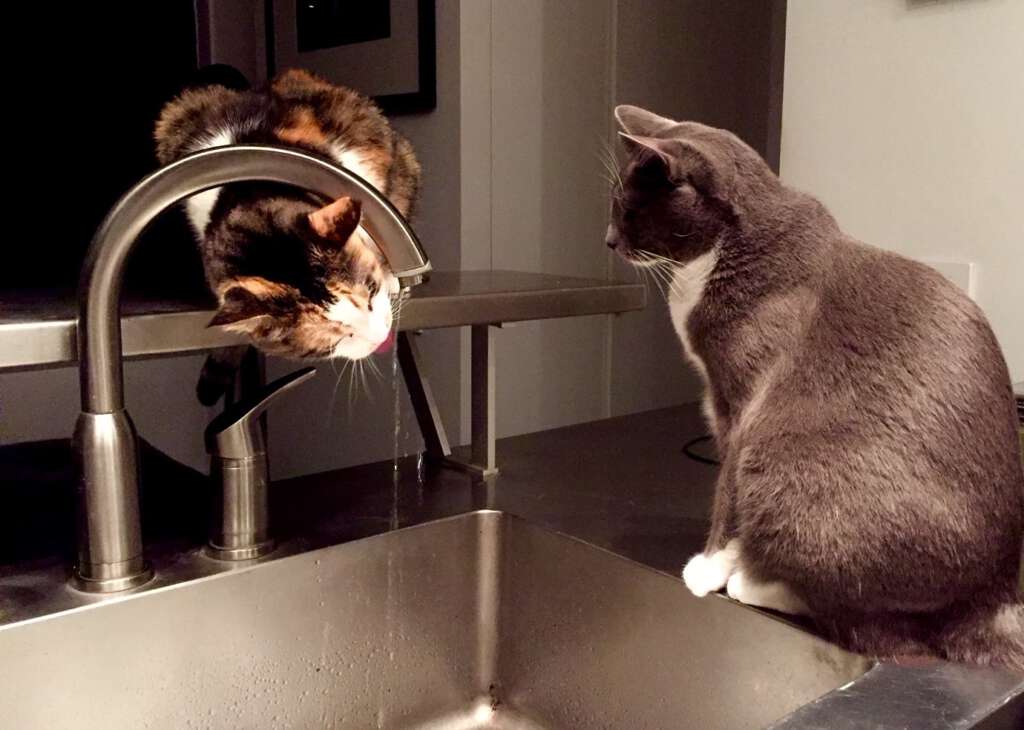
Fever in Cats
When Peggy Lee sang “Fever isn’t such a new thing, fever started long time ago”, she wasn’t kidding. Since the beginning of recorded history, fever has been a hallmark of disease.
Body temperature is regulated by a structure in the brain called the hypothalamus. It controls the body’s “thermal set point” in very similar fashion to a thermostat. When body temperature changes, the hypothalamus works to bring things back to normal. For example, if our body temperature starts to drop, the hypothalamus directs us to start shivering, so that we produce more heat. If the body temperature gets too high, the hypothalamus instructs us to sweat and pant, to help dissipate the heat. This effectively keeps our core temperature at near normal levels. Fever is defined as an elevation of body temperature due to illness. It is a disorder of thermoregulation in which the hypothalamus deliberately turns the thermostat up, resetting the thermal set point to a higher level, so that the body actively seeks to raise its temperature.
The normal feline body temperature runs higher than that of humans, typically ranging from 100 – 102.5o Fahrenheit. Because excitement can raise the body temperature a little bit, I give nervous kitties in my exam room a little slack and allow them up to 102.9o F. If it hits 103o, I consider it a true fever.

Fevers make us humans feel blah, and our first instinct is to try to break the fever. For feverish felines, however, the focus is on finding the reason for the fever. It is important to keep in mind that fever is a symptom, not a disease. It is a healthy, appropriate response to the threat of illness, and it can actually be beneficial. Fevers reduce the division rate of bacteria and enhance the body’s immune system response. Despite their positive role, fevers make cats feel crappy like they do in people, and most cats with fevers become lethargic and withdrawn and often refuse to eat.
Sometimes the cause of a cat’s fever is obvious. For example, cat bite abscesses are common, especially in cats with outdoor access. Many affected cats will have visible evidence of the abscess on examination, and treating the abscess by lancing, flushing, and giving antibiotics usually causes the fever to quickly resolve.

In many cases, however, the cause of the fever is not always obvious. We call this scenario fever of unknown origin (FUO). In human medicine, the term fever of unknown origin has a strict definition: an illness of more than 3 weeks duration with a temperature higher than 101⁰F on several occasions after 1 week of hospitalization and evaluation. While there is no accepted definition in veterinary medicine, the term is used liberally to describe a fever that does not resolve spontaneously, that does not respond to antibiotic therapy, and for which the diagnosis remains a mystery after an initial diagnostic workup. Cats with FUO typically have body temperatures between 103⁰ and 106⁰ F.
There are five major causes of FUO in cats: infectious diseases, inflammatory conditions, immune-mediated disorders, cancer, and adverse reactions to a drug. Infectious causes are the most common reason. Cancer is less common, and FUO due to immune-mediated diseases is rare in cats. Most cases of FUO are caused by a common illness presenting in an unusual fashion.
Figuring out the cause of a fever can be a diagnostic challenge. A thorough medical history may offer the veterinarian some clues as to the origin of the fever. Historical information that should be ascertained include the cat’s vaccination status, recent drug administration, whether the cat has traveled recently (domestic or international), and if there has been any potential exposure to infectious agents (e.g. a cat show, or boarding kennel).

A thorough physical examination is of paramount importance in investigating fevers in cats. Each body system should be meticulously evaluated, with particular emphasis on assessment of the lymph nodes for enlargement and the oral cavity for dental abscesses. Initial laboratory diagnostics should include a complete blood count, serum biochemistry panel, urinalysis, urine culture, feline leukemia virus (FeLV) test, and feline immunodeficiency virus (FIV) test.
In many cases, the history, physical exam, and initial diagnostic tests reveal the cause of the fever. If not, most veterinarians find it reasonable to treat with antibiotics for a presumed bacterial infection. If no cause of fever is revealed, or if the fever persists despite antibiotic therapy, further diagnostic tests are warranted. In 10 to 15% of FUO cases, a cause is never discovered. As you might imagine, I have found FUO to be amongst the most challenging diagnostic situations I have faced as a feline practitioner.

Management of cats with FUO is based on finding and treating the definitive cause of the fever. Although antipyretics – drugs that lower fever – are given to people early in the course of the fever, they are not typically advocated in cats. Cat owners should never attempt to treat their cat’s fever at home. The drugs that humans usually take for fevers, like acetaminophen (Tylenol), ibuprofen, and aspirin can have harmful and sometimes fatal side effects. Cats with fevers often have a poor appetite, and dehydration is a concern because fever increases a cat’s fluid requirements. The common medical advice to “get lots of rest and drink plenty of fluids” is not easily applied to cats. Some cats with FUO may benefit from hospitalization, intravenous fluid and antibiotic therapy, and aggressive nutritional support until a cause of the fever is discovered or the fever resolves on its own.
Fever is a common symptom of illness in cats. The prognosis for recovery depends on the cause. In the case of minor infections or illnesses (abscesses, upper respiratory infections), treatment of the illness resolves the fever. For more severe underlying illness, recovery may take more time and require more intensive treatment.


1 Comment
Erin
Thank you for a great and understandable insight into feline fevers. A specialist’s work is never as simple as it seems in the treatment room. Our feline pals do make it difficult too.